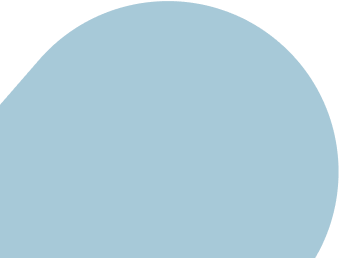

Improve your Product Ownership Knowledge with our A-CSPO Training Curriculum. Gain comprehensive syllabus awareness to clear the exam on your first attempt. As a Certified Scrum Product Owner (CSPO), advance seamlessly to the next level. Completing our curriculum makes you eligible for this advanced credential that sets you apart in agile product management.
Read more...


Advanced Certified Scrum Product Owner (A-CSPO®) Certification Training
Skill you'll gain : PO Core Capabilities, Backlog management
16 Hrs|02 or 03 days
5K+ Enrolled
A-CSPO Training Curriculum
Improve your Product Ownership Knowledge with our A-CSPO Training Curriculum. Gain comprehensive syllabus awareness to clear the exam on your first attempt. As a Certified Scrum Product Owner (CSPO), advance seamlessly to the next level. Completing our curriculum makes you eligible for this advanced credential that sets you apart in agile product management.
Read more...


Advanced Certified Scrum Product Owner (A-CSPO®) Certification Training
Skill you'll gain : PO Core Capabilities, Backlog management
16 Hrs | 02 or 03 days
5K+ Enrolled

15+ years
Experienced Trainers
5
+Trainers
1250
+Certified
4.9/5
+Rating
15+ years
Experienced Trainers
5
+Trainers
1250
+Certified
4.9/5
+Rating
The Advanced Certified Scrum Product Owner curriculum is designed to clarify your role as a Product Owner and further enhance your ability to engage with other stakeholders in your organization. You will be able to communicate more effectively with others and understand their viewpoints to achieve alignment. Through the A-CSPO training curriculum, you can improve your time management by quickly identifying better opportunities and not wasting time on fewer opportunities.
Here is the breakdown of the syllabus of the Advanced Certified Scrum Product Owner (A-CSPO) Certification training:
This curriculum provides a comprehensive overview of the key topics covered in the A-CSPO training program.
Since you are a practicing Product Owner, the advanced Scrum Product Owner curriculum is specifically tailored for you. The A-CSPO course curriculum may include workshops, on-the-job applications, and various learning formats. The advanced Scrum Product Owner course syllabus focuses on enhancing your skills and knowledge, enabling you to work more efficiently in Agile-based organizations as a Product Owner.
Related Info Page
_1733727073.jpg)
CSM Certification Renewal Process and Cost

Professional Scrum Master™ II (PSM A) Certification Syllabus

Professional Scrum Master™ II (PSM A) Certification Exam Format

Professional Scrum Master II (PSM A) Course Target Audience

Professional Scrum Master™ II (PSM A) Certification Learning Objectives

Professional Scrum Master™ level II (PSM A) Certification Process
_1733737932.jpg)
Professional Scrum Master™ level II (PSM A) Certification Eligibility

A-CSM® Certification Cost | Cost of Advanced CSM® Certification

Who Should Take A-CSM Certification? Advanced CSM Course Target Audience

A-CSM Certification Course Syllabus | Advanced CSM Training Curriculum

Advance CSM Course Learning Objectives | A-CSM Certification objective
_1733726656.jpg)
A-CSM Certification Prerequisites - Advanced CSM Eligibility

A-CSM Certification Process | Process to get A-CSM Certification

A-CSM Certification Renewal | How to Renew A-CSM Certification?

PMI-ACP Certification Renewal & Validity, PDU Requirements

PMI-ACP Certification Process | How to get PMI ACP Certification?

PMI-ACP® Certification Cost | PMI ACP® Certification Renewal Cost

PMI-ACP Certification Syllabus | PMI-ACP Training Curriculum

PMI-ACP Course Learning Objectives | PMI-ACP Course Agenda

PMI-ACP Course Target Audience | Who Should Take PMI-ACP Certification?

PMI-ACP Certification Eligibility, Exam Requirements

PMI-ACP Exam Format Guide | Questions, Timing, Breaks & More

PSM I Course Target Audience | Who Should Take PSM I Certification?

PSM I Certification Cost | Registration Price | PSM I Fee
_1733727550.jpg)
PSM I Certification Eligibility | PSM I Requirements

PSM I Certification Exam Format - Timing, Passing Score

PSM I Certification Process | How to Get PSM I Certification?

Professional Scrum Master I (PSM) Training Curriculum | Syllabus

Professional Scrum Master I (PSM) Course Learning Objectives

CSD® Certification Cost | Certified Scrum Developer Training Cost

Certified Scrum Developer (CSD) Certification Process
_1733726982.jpg)
Certified Scrum Developer (CSD) Certification Prerequisites

Certified Scrum Developer (CSD) Certification Renewal

CSD Certification Syllabus | Scrum Developer Training Curriculum

Who Can Become A Certified Scrum Developer (CSD)?

Certified Scrum Developer (CSD) Course Learning Objectives.

A-CSPO Course Target Audience | Who should get A-CSPO Certified?

Advanced CSPO Certification Renewal process | A-CSPO Renewal Cost

Advanced Certified Scrum Product Owner (A-CSPO) Certification Process

A-CSPO Certification Learning Objectives
_1733727322.jpg)
A-CSPO Certification Training Prerequisites

Advanced CSPO Certification Cost | Registration Price and Fee

CSPO Salary | Certified Scrum Product Owner Salary

CSPO Renewal Process| How to renew CSPO Certification?

CSPO Certification Course Syllabus | CSPO Training Curriculum

CSPO® Certification Cost - What is CSPO® Certification Cost?

CSM Exam Pattern | Certified Scrum Master Exam Format
_1733726524.jpg)
Certified Scrum Master (CSM) certification Eligibility & Requirements

CSM Curriculum | CSM Syllabus| Scrum Master Certification Curriculum

CSPO Certification Learning Objectives | CSPO Course Objectives

CSPO Certification Steps | Process to get CSPO Certification

CSM Certification Learning Objectives | CSM Course Objectives

Who Should Take CSM Certification? Who Should Become Scrum Master ?

CSM Certification process | How to become a Certified Scrum Master?

Certified ScrumMaster (CSM) Certification Cost
_1733727073.jpg)
CSM Certification Renewal Process and Cost

Professional Scrum Master™ II (PSM A) Certification Syllabus

Professional Scrum Master™ II (PSM A) Certification Exam Format

Professional Scrum Master II (PSM A) Course Target Audience

Professional Scrum Master™ II (PSM A) Certification Learning Objectives

Professional Scrum Master™ level II (PSM A) Certification Process
_1733737932.jpg)
Professional Scrum Master™ level II (PSM A) Certification Eligibility

A-CSM® Certification Cost | Cost of Advanced CSM® Certification

Who Should Take A-CSM Certification? Advanced CSM Course Target Audience

A-CSM Certification Course Syllabus | Advanced CSM Training Curriculum

Advance CSM Course Learning Objectives | A-CSM Certification objective
_1733726656.jpg)
A-CSM Certification Prerequisites - Advanced CSM Eligibility

A-CSM Certification Process | Process to get A-CSM Certification

A-CSM Certification Renewal | How to Renew A-CSM Certification?

PMI-ACP Certification Renewal & Validity, PDU Requirements

PMI-ACP Certification Process | How to get PMI ACP Certification?

PMI-ACP® Certification Cost | PMI ACP® Certification Renewal Cost

PMI-ACP Certification Syllabus | PMI-ACP Training Curriculum

PMI-ACP Course Learning Objectives | PMI-ACP Course Agenda

PMI-ACP Course Target Audience | Who Should Take PMI-ACP Certification?

PMI-ACP Certification Eligibility, Exam Requirements

PMI-ACP Exam Format Guide | Questions, Timing, Breaks & More

PSM I Course Target Audience | Who Should Take PSM I Certification?

PSM I Certification Cost | Registration Price | PSM I Fee
_1733727550.jpg)
PSM I Certification Eligibility | PSM I Requirements

PSM I Certification Exam Format - Timing, Passing Score

PSM I Certification Process | How to Get PSM I Certification?

Professional Scrum Master I (PSM) Training Curriculum | Syllabus

Professional Scrum Master I (PSM) Course Learning Objectives

CSD® Certification Cost | Certified Scrum Developer Training Cost

Certified Scrum Developer (CSD) Certification Process
_1733726982.jpg)
Certified Scrum Developer (CSD) Certification Prerequisites

Certified Scrum Developer (CSD) Certification Renewal

CSD Certification Syllabus | Scrum Developer Training Curriculum

Who Can Become A Certified Scrum Developer (CSD)?

Certified Scrum Developer (CSD) Course Learning Objectives.

A-CSPO Course Target Audience | Who should get A-CSPO Certified?

Advanced CSPO Certification Renewal process | A-CSPO Renewal Cost

Advanced Certified Scrum Product Owner (A-CSPO) Certification Process

A-CSPO Certification Learning Objectives
_1733727322.jpg)
A-CSPO Certification Training Prerequisites

Advanced CSPO Certification Cost | Registration Price and Fee

CSPO Salary | Certified Scrum Product Owner Salary

CSPO Renewal Process| How to renew CSPO Certification?

CSPO Certification Course Syllabus | CSPO Training Curriculum

CSPO® Certification Cost - What is CSPO® Certification Cost?

CSM Exam Pattern | Certified Scrum Master Exam Format
_1733726524.jpg)
Certified Scrum Master (CSM) certification Eligibility & Requirements

CSM Curriculum | CSM Syllabus| Scrum Master Certification Curriculum

CSPO Certification Learning Objectives | CSPO Course Objectives

CSPO Certification Steps | Process to get CSPO Certification

CSM Certification Learning Objectives | CSM Course Objectives

Who Should Take CSM Certification? Who Should Become Scrum Master ?

CSM Certification process | How to become a Certified Scrum Master?

Certified ScrumMaster (CSM) Certification Cost
Related Popular Courses
